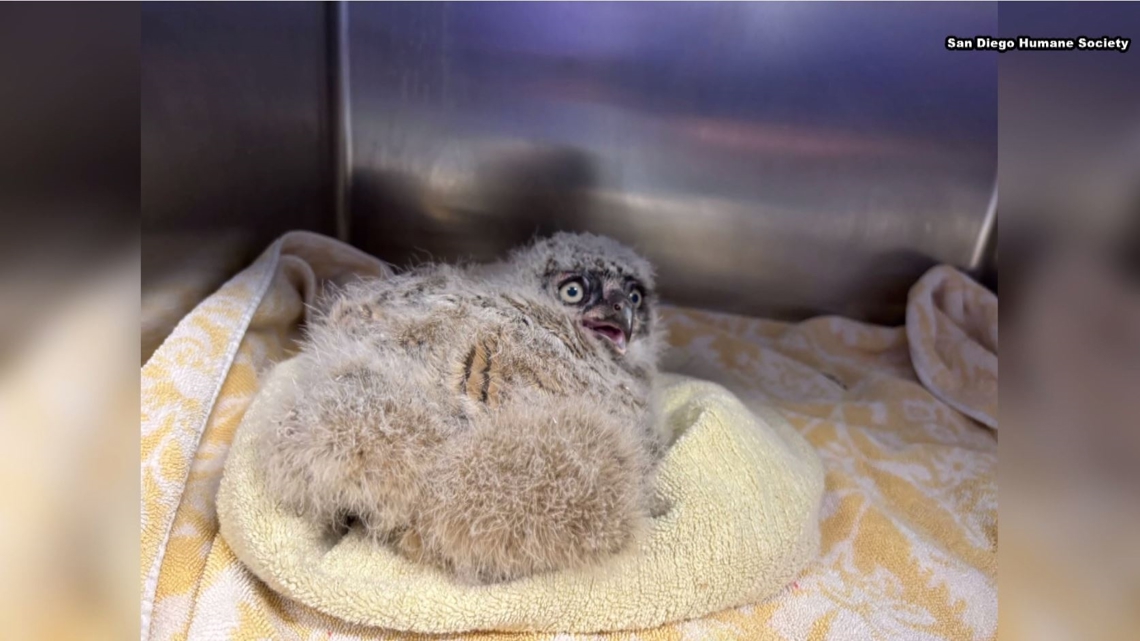
With the help of West Coast Arborists, the other two baby owls are back home, 50 feet up in a Eucalyptus tree. The team could see the little owlet, has siblings.
SAN DIEGO — Two baby owls are back in the wild after being cared for by the San Diego Humane Society’s Wildlife Center.
All of the owlets had fallen out of their nests and were found on the ground. In one case, it was due to recent wind and rain; the other nest was simply too small.
San Diego County is home to Screech owls, Barn owls, and Great Horned owls.
“The Great Horned owls that fell are the typical ones that make the hoot-hoots you hear at night, kind of the iconic owl you would imagine,” said Chantal Larose, the Wildlife Operations Manager.
These fuzzy chicks, or owlets, were found uninjured, but animal experts say that, without intervention, they would not have survived.
“We see everything from baby hummingbirds to bear cubs. Right now, we have a lot of baby birds, squirrels, and skunks,” Larose added.
The San Diego Humane Society’s Project Wildlife re-nested more than 20 owls in 2024. There have been two success stories so far this year, from Carlsbad and the Bay Ho neighborhood. A third from Encinitas was brought into quarantine and now remains in an incubator.
“We tube-fed them mice and rats. Depending on the species, we put a mirror in there so that they see themselves and think they have a friend. We are going to start the process, look for the nest, and make sure the parents are still in the tree,” Larose said.
With the help of West Coast Arborists, the other two baby owls are back home, 50 feet up in a eucalyptus tree. The team could see that the little owlet had siblings.
“They consulted with us about whether they should try to bolster the nest, and they did, making it bigger and safer. All three babies were back in there, and Mom was taking care of them by the evening,” Larose said.
It can be tricky knowing whether or not to intervene with wild animals.
“Animals with visible injuries need help from the public. Birds that are mostly feathered and hopping on the ground—those are the ones we ask the public to leave alone,” Larose explained.
The Humane Society has a step-by-step guide online, but you can also always call to ensure their best chance of survival.
